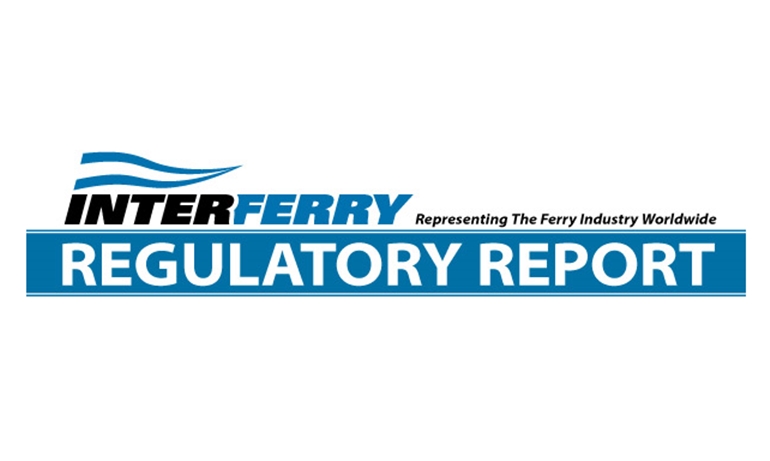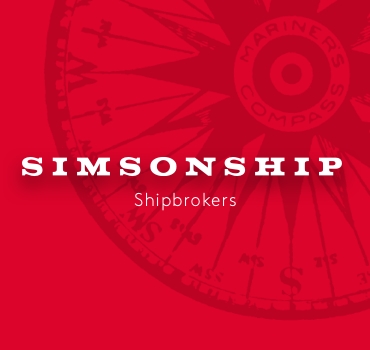
Interferry Regulatory Report • FuelEU Maritime and HSC & Light Craft Code
In this regulatory update, Interferry Regulatory Affairs Director Johan Roos draws attention to the pending FuelEU Maritime initiative – which might as well be interpreted as the EU fuel standard and a precursor of a global fuel standard. Indirectly connected to reducing the carbon content of energy used on board, he also addresses the transition from a High-Speed Craft Code (HSC Code) to a High Speed & Light Craft Code, something that is high on the association’s 2024 agenda.
To be implemented on 1 January 2025, the main objective of FuelEU Maritime – a key part of the EU’s Fit for 55 basket of measures to drastically reduce net greenhouse gas (GHG) emissions – is to increase the demand for and consistent use of renewable and low-carbon fuels. Due to its well-to-wake approach, both production and consumption of energy need to be factored in to reduce the average carbon content of energy used on board. Interferry supports the idea behind FuelEU Maritime as it guarantees a level playing field in the internal market. While the initiative is currently specific to commercial ships calling at any EU port, it will undoubtedly serve as a roadmap for the IMO quest to further reduce GHG emissions.
Applying to commercial vessels of 5,000 gross tons and above, it is important to understand that FuelEU Maritime is not addressing how much carbon these ships emit, but rather the carbon content of energy being used on board. Put simply, even if a ship were to dramatically reduce fuel consumption, thereby proportionally reducing CO2 emissions, it could still be non-compliant. As such, while wind propulsion systems are considered favourable on account of being an energy source, other energy efficiency systems – air lubrication systems for instance – are not because the gains apply only to efficiency, not energy. To reiterate, FuelEU Maritime centres around the energy used on board i.e. carbon content per unit of energy rather than fuel or carbon alone.
Very few of the traditional fossil fuels burned today – including MGO and LNG for Otto (4-stroke) medium speed engines – comply with FuelEU Maritime, so the bottom line is to increase the share of renewable and low-carbon fuels in the energy mix. Come 2025, ferry operators will need to ensure that their fuel distributors give them a low blend of bio- or synthetic fuels in the regular fuel…or find other solutions to meet the requirements. Energy storage from onshore power supply (OPS) is one such possibility. This is the strategy that many ferry operators are already pursuing, but electric propulsion and an Energy Storage System (ESS) will be prerequisites when using OPS to comply with FuelEU Maritime. Relying on shore electricity simply for the hotel load while at berth will in most cases not be sufficient to meet the requirements, because the annual energy consumption at berth is relatively low compared to the total energy used onboard. Since OPS facilities are missing in many ports, especially in the Mediterranean, Interferry is urging EU member states to use money from the Emissions Trading System (ETS) to upgrade port electricity infrastructure. Alternatively, ETS money could be granted to fuel producers and suppliers to increase biofuel or e-fuel production. With billions of euros flowing to the EU ETS, the least distortive way to obtain a relatively modest share of it would be to electrify ports as well as bringing compliant fuels to the market.
FuelEU Maritime itemises a gradual reduction of carbon content. When introduced in 2025, a 2% reduction will apply when benchmarked against the 2020 reference value of 91.16gCO2eq/MJ. This will increase to 6% by 2030, 31% by 2040 and 80% by 2050. Non-compliance will be penalised, but the system is somehow fair in that the reduction targets do not have to be met on an individual ship basis. An operator or group of operators can pool a fleet of ships, so if one ship runs at, say, 50% lower carbon content, there is a surplus that can be used to offset or bank other ships in the pool. As FuelEU Maritime kicks in only about 13 months from now, we recommend our members to get prepared as soon as reasonably practical.
Meanwhile, with energy efficiency at the heart of a lightweight craft design, Interferry is pushing hard to have them included in a new High Speed & Light Craft Code, which takes out the minimum required speed currently imposed by the HSC Code. The rationale behind modifying the HSC Code to a High Speed & Light Craft Code is that it will pave the way to build many more lightweight craft than is now the case, resulting in overall reduced fuel consumption and GHG emissions. Interferry is addressing the issue at both EU and IMO levels. We expect to make good progress during 2024, as policymakers realise that sticking to the HSC Code’s threshold speed is no longer relevant in times when it’s all on hands on deck to reduce GHG emissions.
Johan Roos
Director of Regulatory Affairs, Interferry
Dec 12 2023


















